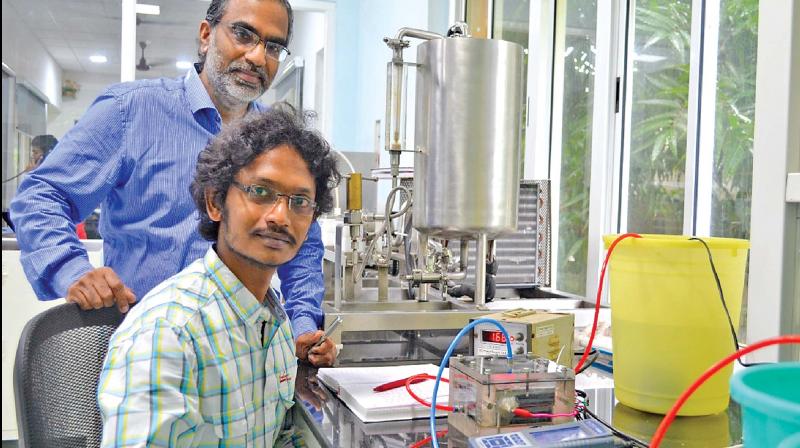IIT-Madras develops cheaper device to purify water
Using graphene-based electrodes in capacitive deionisation method, the team is making pure drinking water from the contaminated water.

Chennai: A team of researchers from IIT Madras has developed a cost-effective material to purify contaminated water with the potential to replace the widely used reverse osmosis (RO) technology in water purification.
Using graphene-based electrodes in capacitive deionisation method, the team is making pure drinking water from the contaminated water. In this method, earchers are getting pure water with TDS (total dissolved solids) less than 400 ppm from brackish water which has TDS more than 2000 ppm- (parts per million).
“But, no Indian company ventured into this market, because the capital cost of making carbon-based material is very high. We have developed a cost-effective carbon-based material called graphene-based electrodes,” said Soujit Sen Gupta, senior research fellow, IIT Madras.
He is part of the team headed by professor T. Pradeep in IIT Madras which developed this material. “It can replace reverse osmosis in a much cheaper way.
A lot of pressure is required in RO system, as it removes pure water from ions. But in CDI technology ions are removed from the water, we can operate with a battery or solar power as it works at a potential of 1.5-1.8 V,” Soujit said.
The research team has also developed a prototype for this model. The prototype’s capacity is 100 litre per hour and it can bring TDS level in the water down from 1,100 ppm to 200 ppm. It can also go much higher than 1,000 litre per hour and it won’t need any big set up or space like the one in RO.
“We are looking to purify sea water using this technology. We are giving utmost priority and working towards it,” he said. “Right now we are removing the ions at a capacity of 20 mg/g of material if we can double the capacity we can easily achieve it.”
This technology can be used in any place where there is the ionic pollutant in the water like lead, mercury, nitrate, arsenic. But this technology cannot remove non-ionic contamination.

